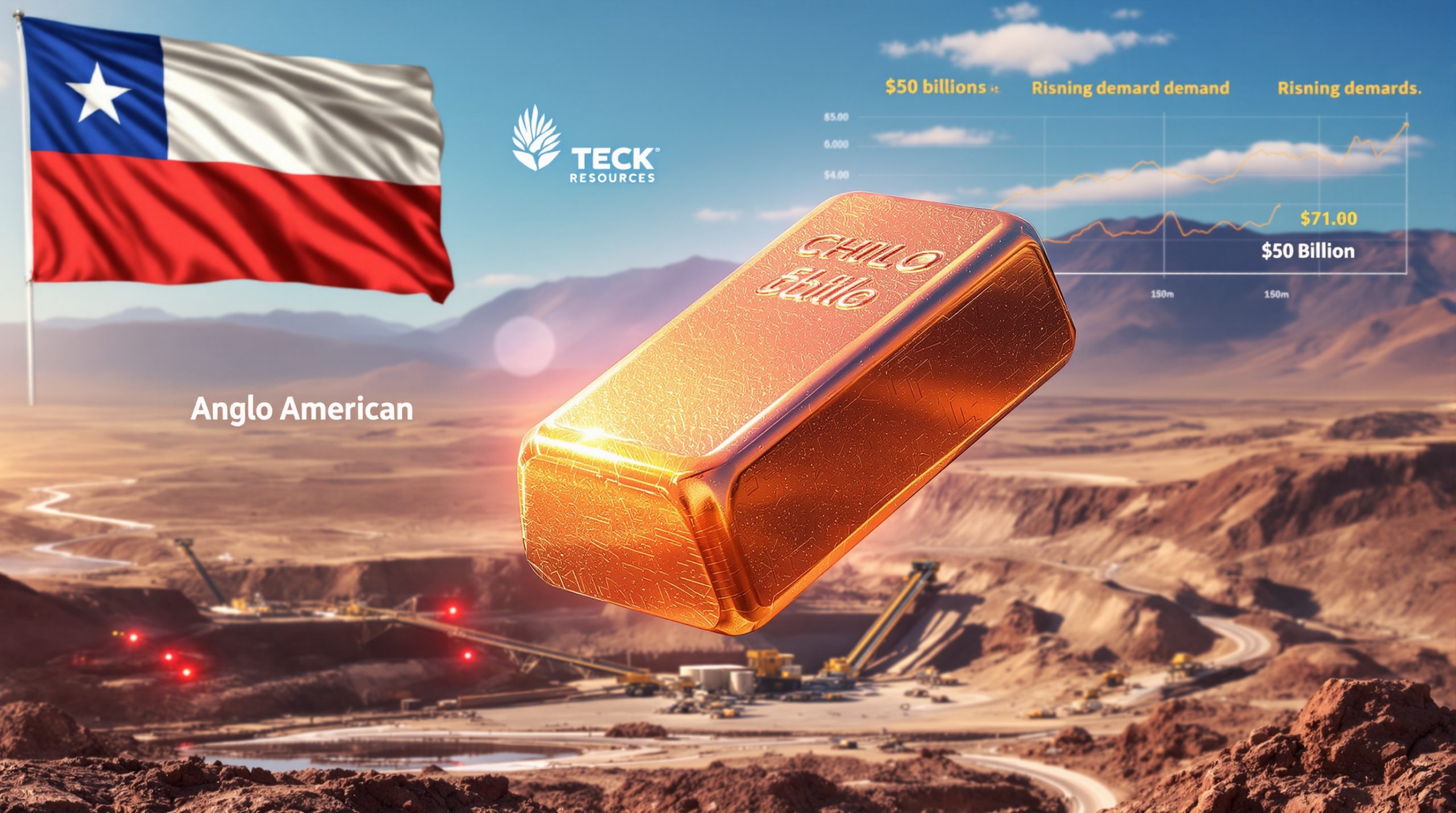Africa's Critical Minerals Opportunity: Leveraging Energy Transition for Economic Growth
Africa stands at a pivotal moment with its abundant critical mineral resources positioned to play a central role in the global energy transition. The continent's vast deposits of minerals essential for renewable technologies and energy storage systems present a transformative economic opportunity that extends far beyond traditional extraction models.
The Scale of Africa's Critical Minerals Endowment
Africa holds approximately 30% of the world's critical mineral reserves, representing an extraordinary natural advantage in the global shift toward renewable energy technologies. The Democratic Republic of Congo alone produces 70% of global cobalt, while countries like Zimbabwe, Ghana, and Namibia possess significant lithium deposits crucial for energy storage technologies.
The continent possesses substantial deposits of manganese, with South Africa and Ghana controlling nearly 40% of global production – an essential component in battery manufacturing and steel production. Additionally, graphite reserves in Mozambique, Tanzania, and Madagascar represent some of the highest-quality natural graphite globally, critical for battery anode materials.
Rare earth elements found across various African nations provide essential components for permanent magnets used in electric vehicle motors and wind turbines, positioning the continent as a potential supplier for these increasingly vital resources.
Current Challenges Limiting Value Capture
Despite its mineral wealth, Africa remains primarily a raw material exporter, capturing only 10-15% of potential value through extraction activities while processing and manufacturing occur elsewhere. This extractive model fails to generate sufficient economic benefits or create meaningful employment opportunities.
Infrastructure deficiencies create substantial bottlenecks in mineral transportation and processing, with inadequate power supply, limited rail networks, and port constraints increasing costs and reducing competitiveness. Many African nations lack the specialized technical expertise and institutional capacity needed to effectively negotiate beneficial agreements with multinational corporations.
Regulatory frameworks often prioritize short-term revenue generation over long-term value creation, missing opportunities to develop integrated industries around critical minerals energy transition. The fragmented approach to critical minerals development across the continent prevents the achievement of economies of scale necessary for competitive processing operations.
Why Must African Nations Act Collectively and Immediately?
The Urgency of Coordinated Action
The window for strategic positioning in global critical minerals supply chains is rapidly narrowing as major economies implement resource security strategies and multinational companies establish long-term supply agreements. Supply chain configurations being established today will determine market access and value capture potential for decades to come.
Current global supply chain disruptions and geopolitical tensions create unprecedented opportunities for new market entrants capable of providing reliable, sustainable critical mineral supplies. However, these opportunities require immediate action to develop the necessary infrastructure, regulatory frameworks, and technical capabilities.
Boston Consulting Group's analysis reveals that uncoordinated individual country approaches yield dramatically lower economic benefits compared to collective strategies that leverage complementary resources and capabilities. Countries pursuing isolated development paths typically achieve only 30-40% of the potential value addition compared to coordinated regional approaches.
Benefits of Pan-African Collaboration
Regional cooperation enables African nations to leverage collective bargaining power when negotiating with multinational corporations, resulting in significantly improved terms for technology transfer, local content requirements, and revenue sharing arrangements. Collaborative approaches allow the development of specialized regional processing hubs that achieve the scale economies necessary to compete with established global players.
Shared infrastructure investments spread capital costs across multiple countries while creating integrated transportation and energy networks that benefit broader economic development. Coordinated regulatory frameworks prevent destructive competition between neighboring countries and establish consistent standards that enhance investor confidence while protecting environmental and social interests.
Knowledge sharing and joint research initiatives accelerate capacity building and technical expertise development, enabling faster adoption of advanced processing technologies and manufacturing capabilities. Regional market integration creates larger consumer bases for finished products, supporting the development of downstream industries beyond basic mineral processing.
Economic Transformation Potential
Strategic beneficiation approaches can increase value capture by 3-5 times compared to raw material exports, with processed lithium carbonate commanding prices 20-30 times higher than raw lithium ore. Employment multiplication effects are substantial, with integrated mineral value chains generating 5-7 times more direct jobs and 15-20 times more total employment including indirect positions compared to extraction-only operations.
Technology transfer opportunities through strategic partnership requirements enable African countries to develop indigenous technical capabilities and innovation capacity. Downstream manufacturing integration creates pathways for broader industrial development, with battery component production supporting additional sectors such as renewable energy systems and electric vehicles.
Local supply chain development around processing operations generates thousands of additional jobs in supporting industries ranging from logistics and maintenance services to equipment manufacturing and technical consulting. Investment in critical mineral value chains attracts complementary industrial activities, creating industrial clusters that accelerate economic diversification beyond mining sectors.
What Strategic Approaches Should Africa Adopt?
Moving Beyond Extraction to Value Addition
Africa must transition from being merely a source of raw materials to becoming an active participant in higher-value segments of mineral supply chains. This requires strategic investment in processing facilities, technical capabilities, and supporting infrastructure.
The continent's exceptional renewable energy potential provides a unique competitive advantage for energy-intensive processing operations, enabling the production of low-carbon minerals increasingly demanded by environmentally conscious markets. Developing specialized processing expertise around specific minerals allows African countries to establish market leadership positions in strategic segments rather than competing across all value chain activities.
Beneficiation and Processing Opportunities
Regional refining hubs for battery minerals represent immediate value addition opportunities, with cobalt sulfate production generating 3-4 times more value than raw cobalt exports. Producing battery-grade lithium chemicals (lithium carbonate and lithium hydroxide) from African lithium resources could capture 6-10 times more value compared to exporting raw lithium concentrates.
Cathode and anode material production facilities represent the next logical step in value chain integration, with cathode active materials commanding prices 15-20 times higher than the raw mineral inputs. Special economic zones focused on mineral beneficiation in South Africa and other regions can create concentrated expertise and shared infrastructure that reduces costs while accelerating technology adoption and innovation.
Metallurgical research and development investments enable the development of processing techniques optimized for African mineral compositions, potentially creating proprietary technologies that enhance competitive advantage. Recovery of by-products and secondary minerals from processing waste streams can significantly enhance overall value capture while reducing environmental impacts.
Manufacturing Integration Pathways
Battery cell and pack assembly facilities represent logical extensions of cathode and anode material production, with cell manufacturing adding 2-3 times more value compared to component production alone. Renewable energy component manufacturing, particularly for solar panels and wind turbines, creates synergies with critical mineral processing while supporting domestic renewable energy deployment.
Electric vehicle production partnerships leverage Africa's critical mineral advantages to attract automotive manufacturing, with Morocco's success in automotive manufacturing demonstrating the continent's potential in this sector. Energy storage system assembly operations support both export markets and domestic renewable energy integration, creating additional value from battery components produced within the region.
Building Credible Partnership Frameworks
Successful transformation requires frameworks that balance investor confidence with national development objectives, creating mutually beneficial arrangements that support long-term collaboration. These frameworks must address both economic and governance considerations to attract quality battery metals investment while ensuring appropriate value retention.
Key Elements of Effective Partnerships
Transparent and stable regulatory environments provide essential foundations for investor confidence, with clearly defined rights, obligations, and dispute resolution mechanisms. Predictable fiscal regimes with progressive value-sharing mechanisms allow governments to capture increasing benefits as projects mature while providing investors with clarity regarding financial obligations.
Clear local content and skills development requirements ensure technology transfer and capacity building without imposing unrealistic short-term demands that discourage investment. Environmental and social governance standards alignment ensures that mineral development contributes to sustainable development while meeting international market expectations.
Joint venture structures that balance foreign expertise with local ownership create knowledge transfer mechanisms while ensuring appropriate domestic value retention. Research and development partnerships between international companies and African institutions accelerate technology adaptation and innovation capacity development.
How Can Africa Leverage Energy Resources Alongside Minerals?
The Energy-Minerals Nexus
Processing critical minerals is energy-intensive, creating a strategic opportunity to pair mineral development with energy infrastructure. This integration can reduce processing costs while supporting broader energy access objectives.
The significant energy requirements for mineral processing create natural anchor customers for renewable energy projects, enabling project financing that might otherwise be challenging to secure. Integrated energy and mineral development planning can optimize infrastructure investments while reducing overall project risks.
Renewable Energy Integration
Solar and wind deployment to power mineral processing facilities can reduce operating costs by 20-30% compared to diesel generation or expensive grid electricity. These cost advantages are particularly significant in regions with exceptional solar resources, where electricity costs can be as low as $0.02-0.04 per kilowatt-hour.
Green hydrogen production using renewable electricity can support energy-intensive refining processes while creating additional export opportunities as global hydrogen markets develop. Mini-grid development serving mining operations can extend electricity access to surrounding communities, supporting broader rural electrification objectives.
Battery storage systems ensure reliable power for processing facilities while demonstrating practical applications of the very minerals being processed. This creates virtuous cycles of development and technology demonstration that enhance market competitiveness.
Energy Security Benefits
Reduced dependence on imported fuels for mineral processing improves national energy security while decreasing exposure to international price volatility. Lower production costs through renewable energy integration enhance the competitiveness of African processing operations in global markets.
Decreased carbon footprint for processed minerals creates marketing advantages as manufacturers increasingly prioritize low-carbon materials for their products. The development of integrated energy and mineral systems creates technical expertise that can be applied to broader economic sectors, supporting energy transition beyond mining operations.
What Specific Regional Opportunities Exist?
Southern African Development Community (SADC)
The SADC region possesses a particularly advantageous combination of mineral resources, existing infrastructure, and industrial capacity that positions it for leadership in critical mineral value chains.
Strategic Advantages
Established mining expertise and infrastructure provide foundations for accelerated development, with substantial technical capabilities already present in countries like South Africa and Zambia. Relatively developed transportation networks, including the North-South Corridor linking multiple SADC countries, offer logistics advantages for integrated mineral development.
Existing manufacturing capabilities in South Africa provide potential end markets and technical expertise for mineral processing outputs. South Africa's automotive sector, which produces over 600,000 vehicles annually, represents a potential customer for battery materials and components.
Complementary mineral deposits across multiple countries create natural opportunities for regional integration, with cobalt from DRC, lithium from Zimbabwe, manganese from South Africa, and graphite from Mozambique forming a comprehensive battery materials portfolio.
Priority Development Areas
A battery materials processing corridor linking DRC, Zambia, and South Africa could leverage existing transportation infrastructure while creating specialized processing capabilities at strategic locations. The corridor could process over 100,000 tons of battery materials annually, generating $3-5 billion in additional value compared to raw material exports.
Integrated lithium value chain development in Zimbabwe and Mozambique would leverage Zimbabwe's hard rock lithium resources alongside Mozambique's natural gas and renewable energy potential for processing operations. Rare earth elements processing facilities in Tanzania and Malawi could serve growing global demand while developing specialized expertise in these technically challenging minerals.
Renewable energy manufacturing hubs in South Africa and Namibia could leverage existing industrial capabilities alongside world-class solar and wind resources. These hubs could produce both renewable energy components for export and systems for powering regional mineral processing operations.
West African Opportunities
West Africa's growing mining sector presents complementary opportunities for regional integration, with emerging critical mineral resources alongside established mining capabilities.
Key Development Potentials
Lithium processing facilities in Ghana and Mali could serve both regional resources and international markets, with Ghana's stable investment environment providing advantages for processing operations. Manganese value chain development in Côte d'Ivoire and Ghana could build on existing production while moving into higher-value manganese products for batteries and steel production.
Bauxite-to-aluminum value chain strengthening in Guinea would leverage the country's world-class bauxite resources alongside regional energy resources for energy-intensive aluminum production. Guinea possesses approximately 25% of global bauxite reserves but currently captures minimal value through basic processing.
Renewable energy integration with mining sustainability transformation across the region could significantly reduce operating costs while improving environmental performance. West Africa's exceptional solar resources provide natural advantages for low-cost renewable energy production.
What Implementation Steps Are Required?
Immediate Policy Actions
To capitalize on this energy-linked critical minerals opportunity, African governments must take concrete steps without delay to establish appropriate frameworks and capabilities for critical mineral value chain development.
National Level Priorities
Developing critical minerals strategies aligned with industrialization goals provides essential foundations for coordinated action. These strategies should identify specific value chain opportunities, infrastructure requirements, and policy interventions necessary for successful implementation.
Establishing clear fiscal and regulatory frameworks for value addition encourages investment while ensuring appropriate domestic benefits. These frameworks should include targeted incentives for processing investments alongside stabilization provisions that provide investor certainty.
Investing in technical education and skills development programs addresses crucial human capital requirements for successful value chain integration. Programs should combine immediate vocational training with longer-term educational system development focusing on metallurgy, chemical engineering, and advanced manufacturing disciplines.
Creating investment promotion agencies specialized in mineral value chains helps attract appropriate international partners while communicating strategic priorities. These agencies should possess both technical expertise and negotiation capabilities to structure beneficial partnership arrangements.
Regional Coordination Mechanisms
Harmonizing trade policies to facilitate cross-border value chains reduces friction in regional material flows while supporting integrated processing operations. Specific measures should include streamlined customs procedures, reduced tariffs on intermediate products, and coordinated export policies.
Developing shared infrastructure investment frameworks enables efficient capital allocation while ensuring that transportation, energy, and water systems support integrated regional development. Public-private partnership models can accelerate infrastructure development while distributing financial risks appropriately.
Establishing regional research and development centers creates shared technical capabilities while accelerating innovation and technology adaptation. These centers should focus on processing technologies optimized for African mineral compositions and operating conditions.
Creating coordinated negotiation approaches for major mining projects enhances bargaining power while preventing counterproductive competition between neighboring countries. Regional development banks can support this coordination through specialized financing instruments and technical assistance.
Financing and Investment Structures
Mobilizing capital for mineral value chain development requires innovative approaches that combine public and private resources while distributing risks appropriately.
Funding Sources and Mechanisms
Sovereign wealth funds dedicated to mineral beneficiation can provide patient capital for strategic investments while ensuring domestic financial participation in value chain development. Several African countries have established such funds, but greater coordination between national funds could enhance impact.
Public-private partnerships for infrastructure development enable the construction of essential transportation, energy, and water systems without overburdening public finances. Blended finance structures can reduce private sector risk while ensuring appropriate public sector oversight.
Development finance institution support for strategic projects can provide both financing and technical assistance, particularly for initial demonstration projects that establish proof of concept. African Development Bank and other regional institutions have developed specialized instruments for resource-based industrialization.
Climate finance linkages for low-carbon mineral processing create additional funding sources while supporting environmental performance improvements. Carbon credits for renewable-powered processing operations can enhance project economics while demonstrating environmental commitment.
How Will Global Market Dynamics Impact Africa's Opportunity?
Critical Minerals Demand Projections
The scale of projected demand growth creates substantial space for new entrants in processing and manufacturing, with supply gaps emerging across multiple critical minerals.
Key Market Trends
Lithium demand is projected to increase by over 40 times by 2040, requiring approximately 2-3 million tons of lithium carbonate equivalent annually compared to current production of roughly 100,000 tons. This extraordinary growth creates opportunities across the entire lithium value chain from extraction through battery manufacturing.
Cobalt requirements are expected to grow 6-7 times in the same period despite ongoing efforts to reduce cobalt intensity in battery chemistries. Even with partial substitution, annual demand could reach 400,000-500,000 tons compared to current production of approximately 70,000 tons.
Rare earth elements demand is projected to triple for clean energy technologies, with particular pressure on neodymium, praseodymium, and dysprosium used in permanent magnets for electric motors and wind turbines. These specialized materials face significant supply constraints that African resources could help address.
Graphite needs for batteries are projected to expand by 25 times by 2040, requiring both natural and synthetic graphite supplies to satisfy demand. Africa's high-quality natural graphite deposits could serve significant portions of this growth if appropriate processing capabilities are developed.
Competition and Strategic Positioning
Africa must navigate a complex competitive landscape with established players while identifying strategic market positions that leverage the continent's unique advantages.
Strategic Considerations
China's dominant position in mineral processing, particularly for battery materials, represents both a challenge and an opportunity. While Chinese companies control 80-90% of current processing capacity for many critical minerals, supply diversification concerns among manufacturers create openings for alternative suppliers.
Western nations' focus on supply chain diversification provides potential partnership opportunities for African countries that can demonstrate reliable, sustainable production capabilities. Recent policy initiatives in Europe and North America specifically prioritize supply chain diversification away from current concentrations.
Emerging competition from Latin American mineral producers, particularly for lithium and copper, requires strategic differentiation by African countries. Regional integration and renewable energy advantages provide potential competitive differentiators compared to individual Latin American producers.
Technology shifts may alter specific mineral requirements, necessitating careful monitoring of battery chemistry developments and other technological trends. Maintaining flexibility in processing capabilities can help mitigate technology change risks while identifying emerging opportunities.
What Are the Environmental and Social Imperatives?
Sustainable Development Integration
Africa's mineral development must prioritize environmental and social outcomes to ensure long-term sustainability and access to increasingly conscientious international markets.
Environmental Considerations
Water-efficient processing technologies are essential given that many critical mineral regions face water scarcity challenges. Closed-loop water systems that achieve 85-95% water recycling rates can minimize consumption while reducing contamination risks.
Renewable energy integration minimizes carbon footprints while providing cost advantages through Africa's exceptional solar and wind resources. Processing operations powered by renewable energy can achieve 70-90% lower carbon emissions compared to conventional energy sources.
Mine rehabilitation and biodiversity protection programs should be integrated from project inception rather than addressed as afterthoughts. Comprehensive environmental management systems that meet international standards provide both ecological benefits and market access advantages.
Circular economy approaches maximize resource efficiency through comprehensive material recovery, waste minimization, and by-product utilization. Processing techniques that recover multiple elements from complex ores can significantly enhance both economic returns and environmental performance.
Social Development Linkages
Community benefit-sharing mechanisms ensure that local populations receive tangible advantages from mineral development beyond basic employment. These can include equity participation, revenue sharing, and dedicated development funds managed with community input.
Skills development and local employment prioritization create sustainable economic benefits while building long-term capabilities. Structured training programs with clear advancement pathways can transform mining operations from extractive activities to capability development centers.
Small and medium enterprise integration into supply chains multiplies economic benefits through business development opportunities for local entrepreneurs. Supplier development programs that provide technical assistance and initial contract opportunities can nurture competitive local businesses.
Infrastructure development with broader community benefits ensures that investments in transportation, energy, and water systems serve regional development beyond mining operations. Shared-use infrastructure models can significantly enhance development impacts while improving project economics.
A Call for Immediate and Collective Action
The critical minerals opportunity linked to the global energy transition represents a historic chance for Africa to transform its economic relationship with natural resources. However, this window will not remain open indefinitely.
Current global supply chain reconfigurations create unprecedented opportunities for new market entrants, but these opportunities require immediate action to develop appropriate capabilities and infrastructure. The decisions being made today by manufacturers, technology companies, and investors will shape market access for decades to come.
The continent's extraordinary combination of critical mineral endowments, renewable energy potential, and regional integration possibilities provides natural advantages that can support competitive value chain development. However, these advantages must be strategically leveraged through coordinated policies and investments.
African nations must act with urgency, credibility, and collective purpose to move beyond traditional extraction models toward integrated regional value chains. This requires establishing strategic partnerships with technology and manufacturing companies that transfer skills and capabilities rather than simply extracting raw materials.
Building the energy infrastructure necessary to power mineral processing operations is essential for both economic competitiveness and environmental sustainability. Africa's world-class renewable resources can provide cost advantages while ensuring low-carbon production increasingly demanded by global markets.
Environmental and social sustainability must be integrated throughout development planning to ensure long-term benefits while meeting increasingly stringent market requirements. Sustainable practices are no longer optional but essential for market access and financing.
By taking these steps immediately and collectively, Africa can leverage its critical mineral endowments to create sustainable economic growth, skilled employment, and technological advancement across the continent. The energy transition provides not just a market opportunity but a transformative moment to establish new development pathways beyond traditional resource extraction models.
Want to Capitalise on the Next Major Mineral Discovery?
Stay ahead of the market with Discovery Alert's proprietary Discovery IQ model, which provides real-time notifications of significant ASX mineral discoveries across Africa's critical minerals landscape and beyond. Explore how historic discoveries have generated substantial returns by visiting Discovery Alert's dedicated discoveries page and position yourself for investment success.




